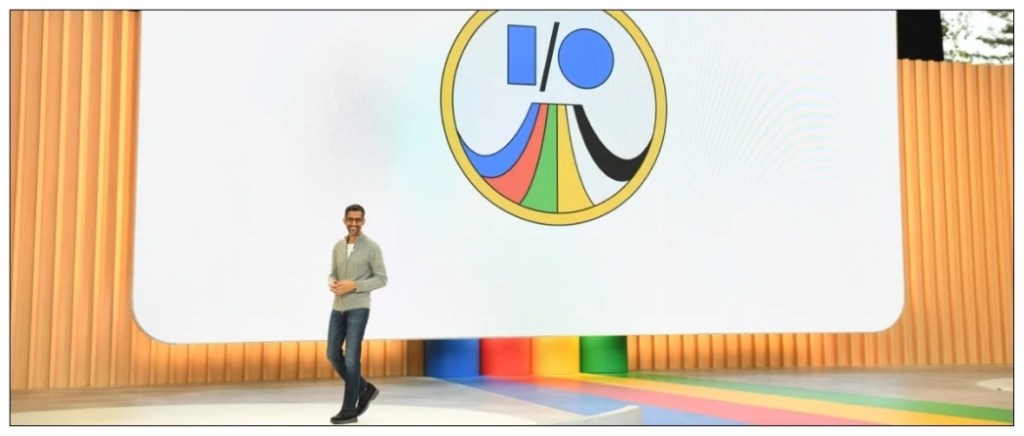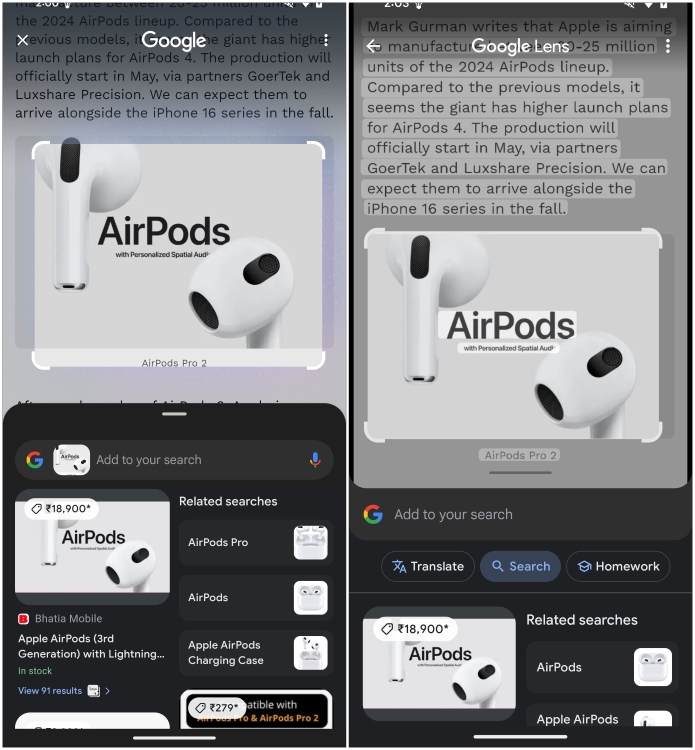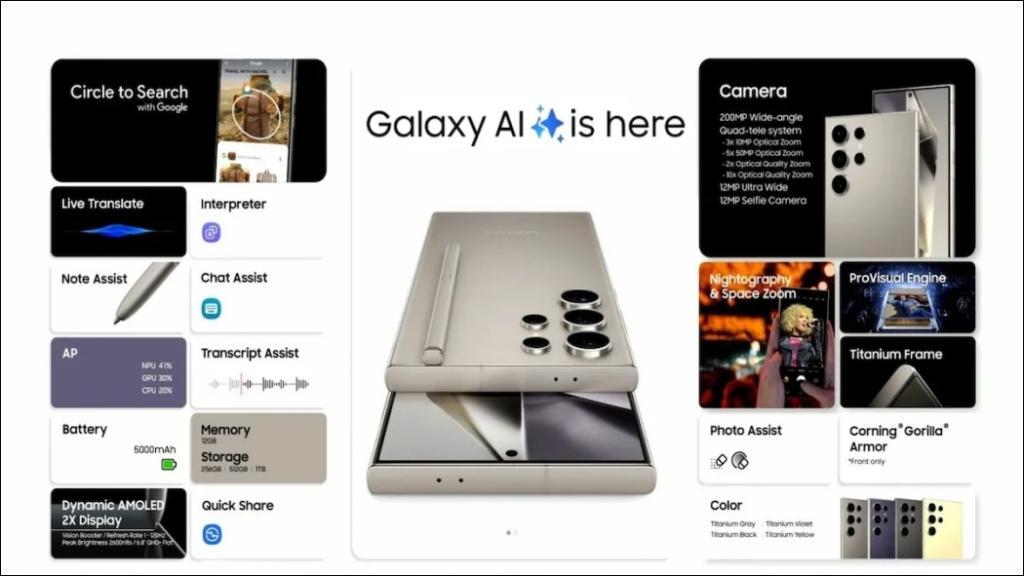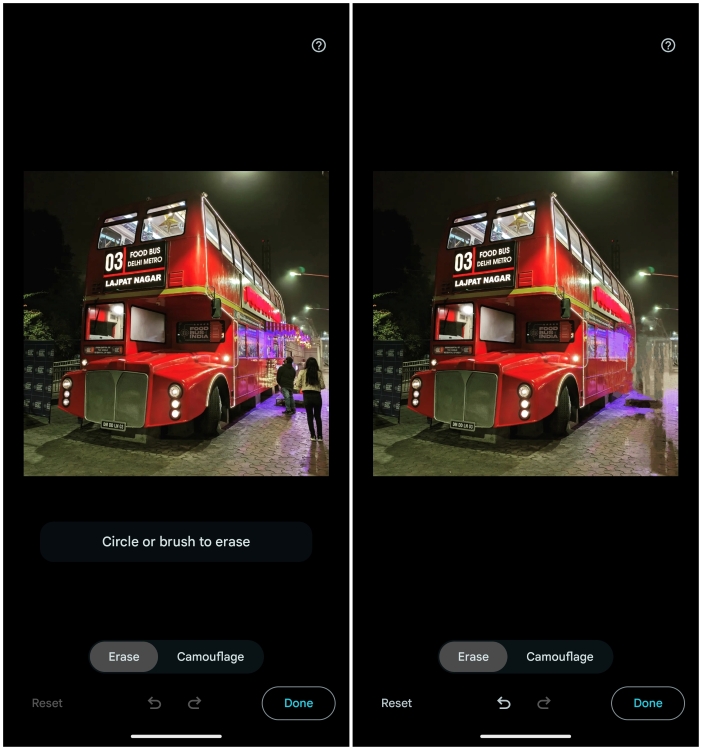- Big Tech companies these days are using 'AI-powered' as their new favorite buzzword for marketing their smartphones.
- Many new AI features misrepresent incremental improvements, dressing up existing algorithms, instead of taking advantage of AI.
- Brands should focus on creating AI features that are truly useful and user-friendly rather than gimmicky or half-baked features.
Artificial Intelligence or AI has been around for decades, but it seems to be all the rage these days, particularly in the smartphone market. Every major smartphone release boasts “revolutionary” AI features. But are these advancements genuine, or simply marketing gimmick to drive sales? I have my thoughts on this and here’s why I think this needs to stop.
Powered by AI – The New Hype Word on the Block
Every now and then some revolutionary technology hits the mainstream media and becomes the buzzword of the period. We have seen this with Bitcoin and cryptocurrency back in the 2010s, Big Data in 2015, Web 3.0, Metaverse, and Machine Learning in the 2020s, and now it’s time for AI.
ChatGPT (recently turned one) and DALL-E’s 2022 debut sparked a global AI frenzy. Suddenly, a plethora of tools touted chatbot functionality in one way or the other. Whether it is to answer your questions like a search engine, correct your grammar, compose long lines of code, or act like your girlfriend, a virtual one, of course.
Now Google already had some interesting features under its roof that it had worked on over the years but how could it not jump on this AI bandwagon? Soon, we saw the announcement for Bard (now, Gemini), which was Google’s alternative to ChatGPT.
Its rushed development raised questions about Google, an AI leader seemingly outpaced by a non-profit. So Google intended to include AI in all of its products to stay in the competition.

I guess this is why they went full throttle on AI with the launch of their flagship Pixel 8 and 8 Pro, which boasted a bunch of “AI-powered” features. This triggered a domino effect. Samsung’s S24 launch followed suit, and “AI” became the industry’s new selling point. You can read all about the coolest Galaxy AI features right here.
All new smartphones now carry “some form of AI” in their marketing campaigns. For example, the newly released Asus Zenfone 11 Ultra boasts AI ingenuity “making life easier”. But what exactly do they mean by ingenuity? These are features like real-time transcription, noise cancellation, live translation, and AI-generated wallpapers – technologies that predate the AI hype.

The Reality of These ‘New’ AI Features
Now, I’m not against companies using the term AI if the product justifies its name. But my concern is that most of these “revolutionary” features are just incremental improvements of things we have already seen run on transformer models. Only a select few leverage the true potential of current AI’s generative capabilities.
Let’s take “Circle to Search” as an example. It was one of the most talked about features during the launch of the Galaxy S24 series. It captures the entire screen when you bring it up and lets you draw a circle around the subject you want to search for. Well, seasoned Android users would recognize it as a more accessible version of Google Lens that we’ve had for a long while.

Magic Editor is another such feature. Heavily promoted as new in Google’s announcements, it is, in essence, an enhanced version of Pixel 6’s Magic Eraser, which was introduced in 2021. Even at the time, the functionality wasn’t entirely novel. A Magic Editor-like subject removal feature has been available on iPhones since iOS 16. Similarly, Xiaomi devices have offered the ability to change the sky and color tones for a long time.
Smart replies have also been around since Google’s Allo messenger was introduced back in 2016. Live translation has been available in Google Translate in the form of Interpreter mode and also came with the Pixel Buds. Live captions have been a thing on Android since 2019.
Abandonment Issues of Big Tech
It is common knowledge that working on these AI features takes a lot of resources, research, and development, which costs a lot of money. Since phones are usually released on a yearly cycle, people working on these projects usually don’t get enough time to polish the features to the tee. When they don’t bring the expected returns in terms of sales, development teams, and investors may have little to no motivation to continue working on them, thus, leading to abandonment.
Google is the biggest culprit when it comes to abandoning its projects as there is an entire website dedicated to projects that Google has killed off. Samsung and other OEMs are not far behind as they stop working on fleshing out and improving said features and jump on to the next thing. This leaves a bad taste in the mouths of consumers, eroding their trust in the brand as well. Plus any significant innovation that could have been part of a future update just gets left behind.

Samsung’s Bixby exemplifies this issue. Once considered a prominent smartphone assistant with a dedicated button, it rarely gets mentioned today. The launch of Galaxy S24 could have been a good time to announce some new AI capabilities for Bixby but seems like it got left behind in favor of other glamorous features.
Half-Baked Results in Day-to-Day Life
The “wow factor” of some of these AI features often overshadows their practicality. This is where the gimmick portion of the article’s headline comes in. Several users, even tech enthusiasts, rarely find themselves revisiting these features.
I wouldn’t say every AI feature that has come out recently is bad or a facade. The Summarization option in the Recorder app or the Call screening feature for spam calls are genuinely useful tools, that a lot of people use quite often. Replacing Google Assistant with Gemini is a good move, and having an onboard language model like Gemini Nano is a step in the right direction.

But other features require the user to go out of their way to use it which is just inconvenient. Most people wouldn’t change their smartphone habits overnight. Even when they do try to use those AI features, the results can be underwhelming.
Take the Pixel 6’s Magic Eraser, for example. It seemed to perform wonders in promotional videos. But in real-world usage, it leaves much to be scrutinized as erased subjects leave a trail of smudged artifacts in the image.

Similarly, Samsung S24’s live call translation has issues understanding accents, and dialects and doesn’t work as well as it should. Bixby Text Call, Samsung’s alternative to Google’s Call screening never once properly transcribed the other person’s message for me. Instead, I had to reluctantly answer the calls just so I didn’t miss out on something important.
So, Is there a Solution to This?
So what should companies and manufacturers should do instead? My advice would be to shift the focus from flashy features to user-centric solutions.
Imagine integrating Gemini seamlessly with Google Home for an intuitive smart home experience. Or, improving Live captions to make it multilingual and adaptive to content on your phone’s screen. These subtle improvements, the ones that operate quietly in the background, are the true hallmarks of a successful AI implementation.
In the coming months, we can expect a flurry of new AI features to be announced at the upcoming Google I/O 2024, and Apple is sure to include AI functionality in the upcoming release of iOS. I’m waiting to know what the next buzzword is going to be, one that will power everything, and become the prefix to features that we already have now.


















